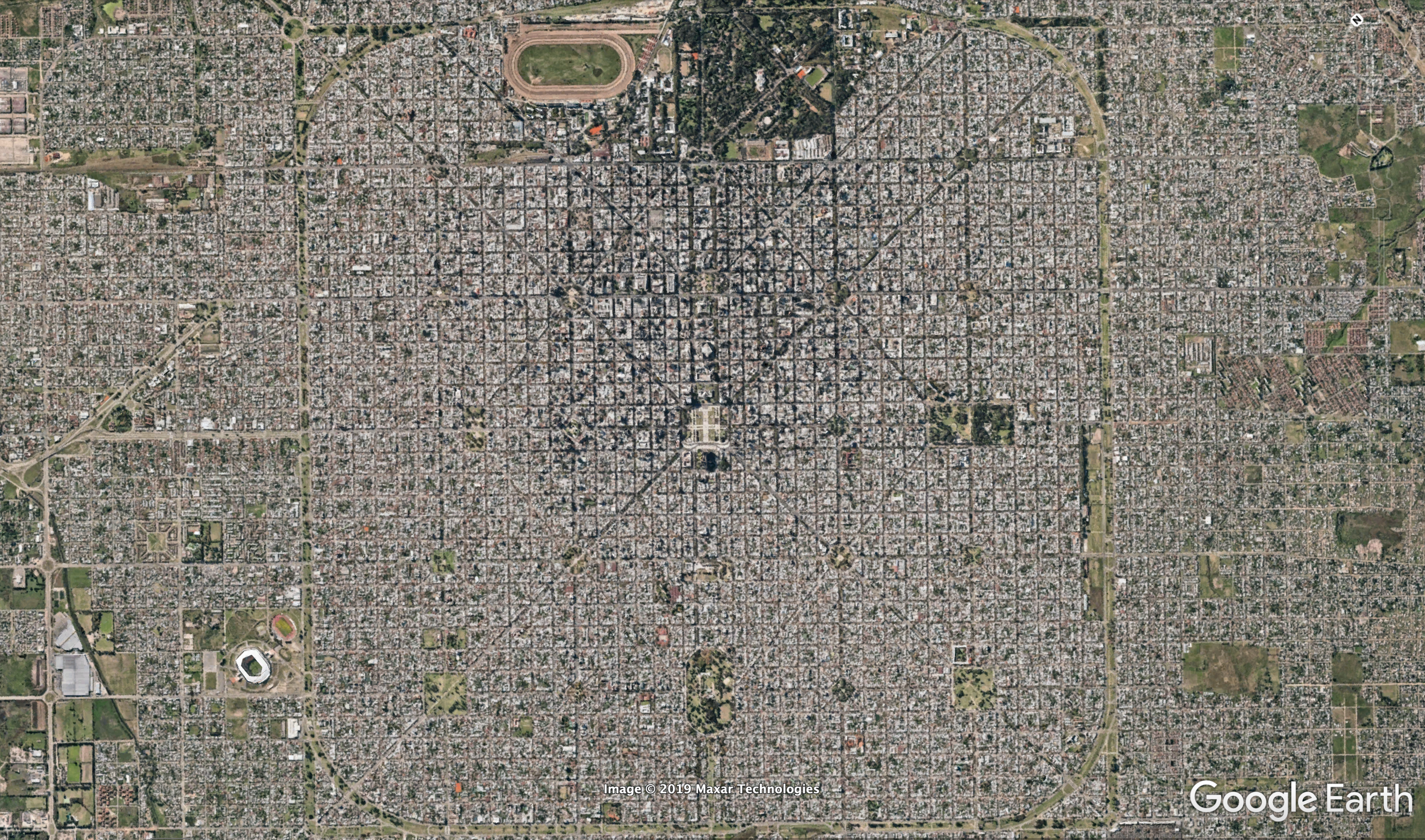La Plata, founded in 1882, is one of the last examples of a city designed (loosely) according to the Law of the Indies, which established a simple, orderly model for new developments in Spain’s colonial holdings. The goal was order, rationality, centrality, and legibility. Gridded streets centered around a church and other governmental buildings, all surrounded by agricultural land (ejido). It has an ortho-radial grid, with “implicit” block subdivision from the diagonal streets, and grid deformation on the outskirts with street extensions. Finally, a ring road surrounds the city for a degree of discrete separation. The city is precisely and intentionally designed, with the grandeur of a planned capital, and it is known for being pedestrian friendly. However, the blocks themselves are very heterogeneous, with unordered jumbles of buildings, some with an inner courtyard that is only accessible through building back entrances.
La Plata, Argentina

Sources: JULIO ANGEL MOROSI (2003) La Plata: an advanced nineteenth century new town with ancient roots, Planning Perspectives, 18:1, 23-46, DOI: 10.1080/0266543032000047396